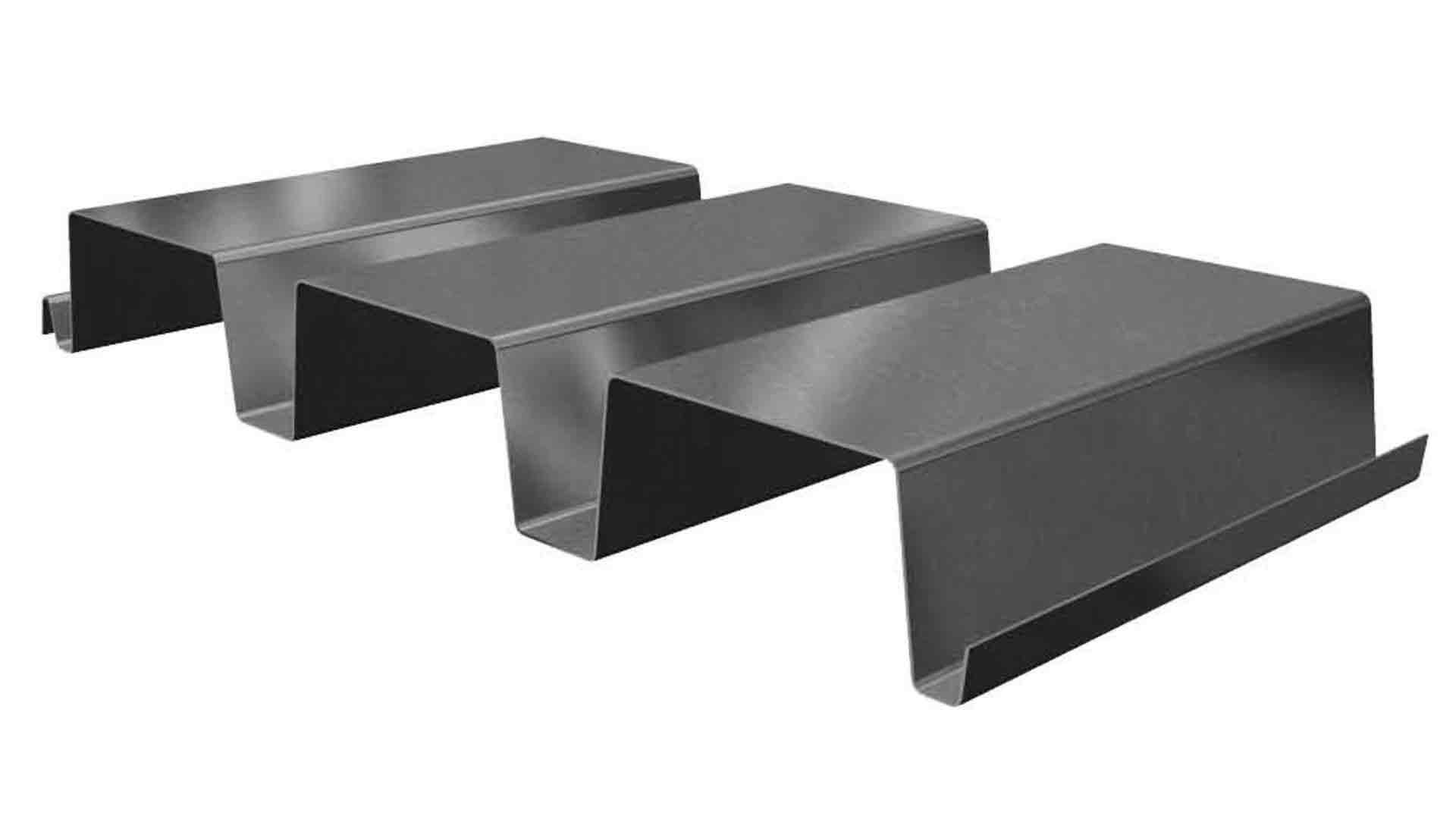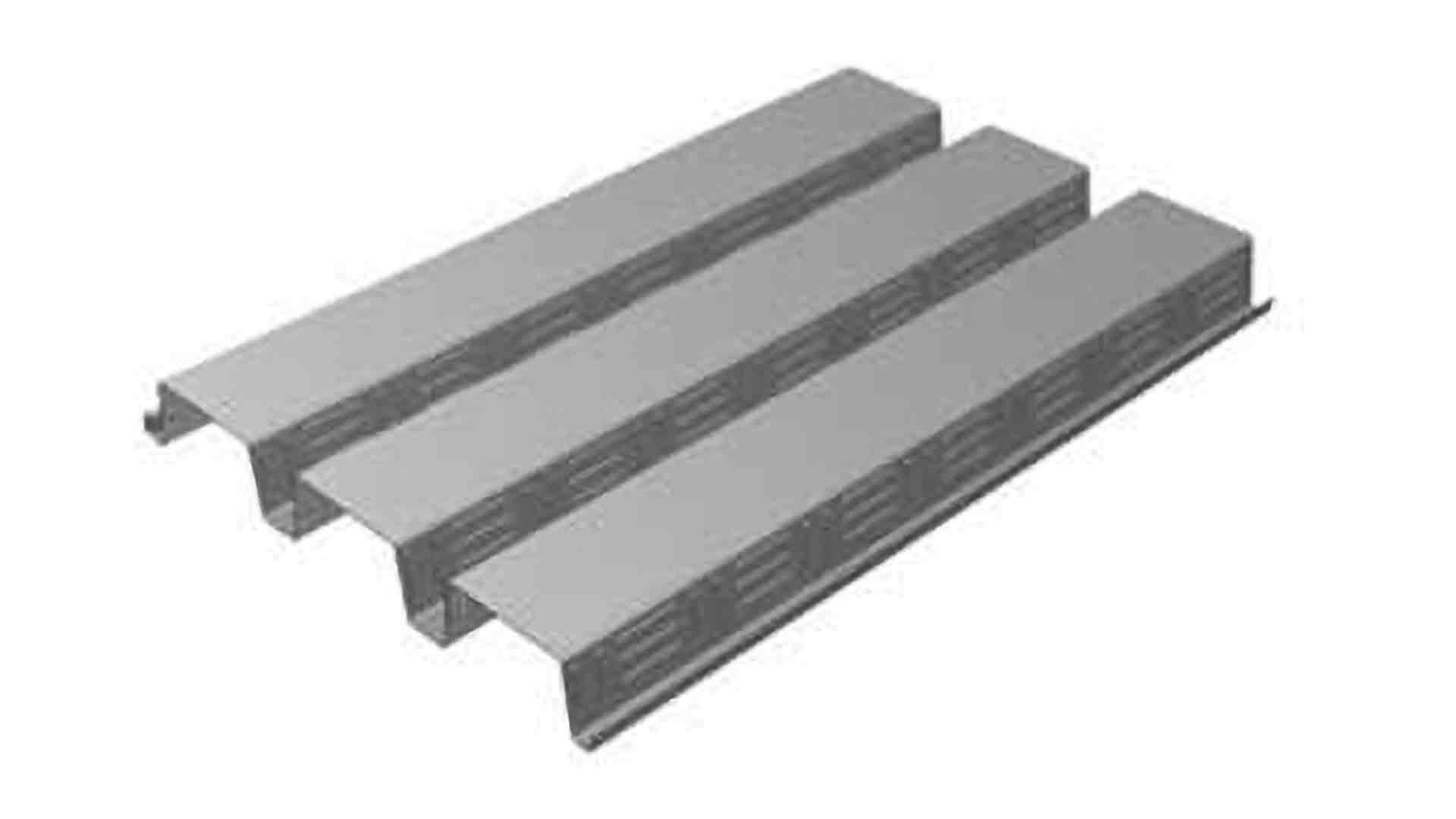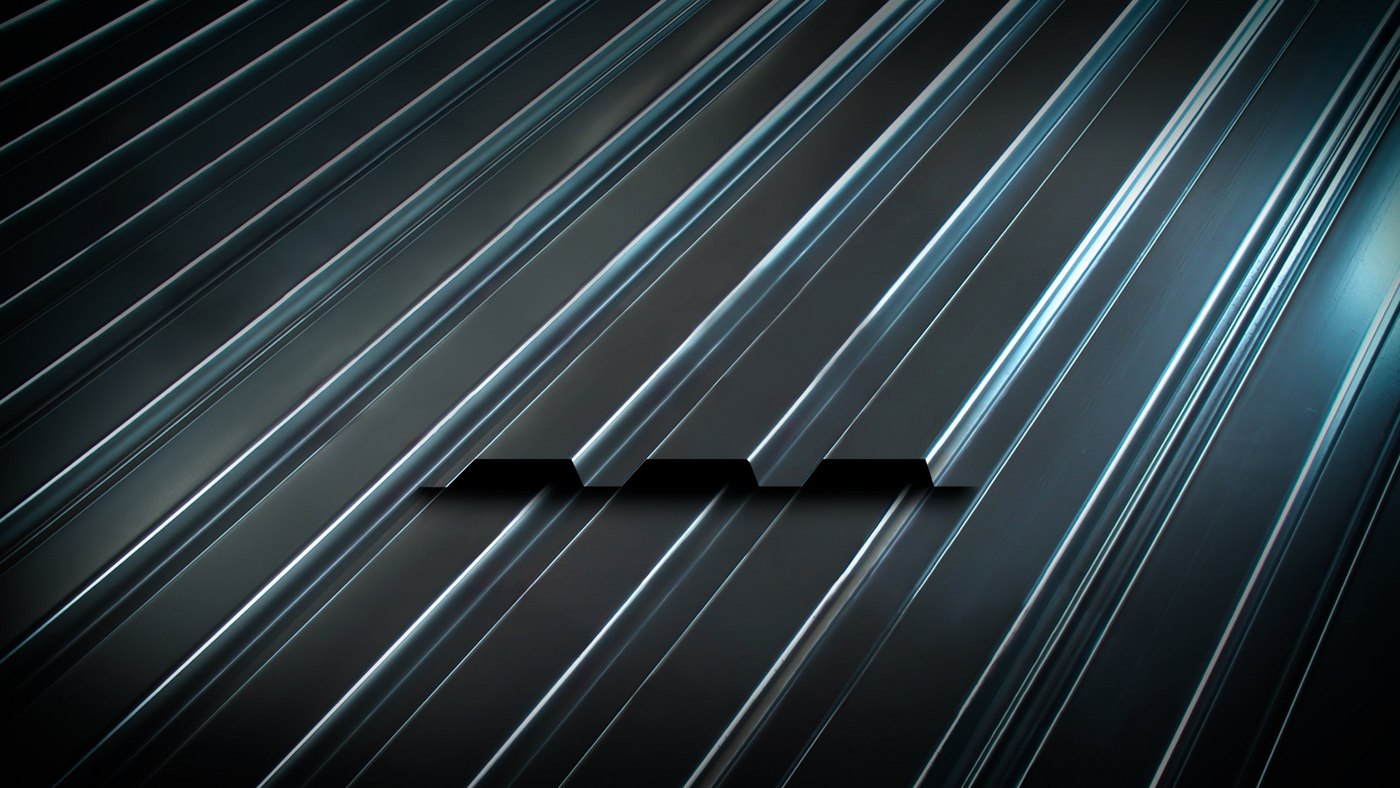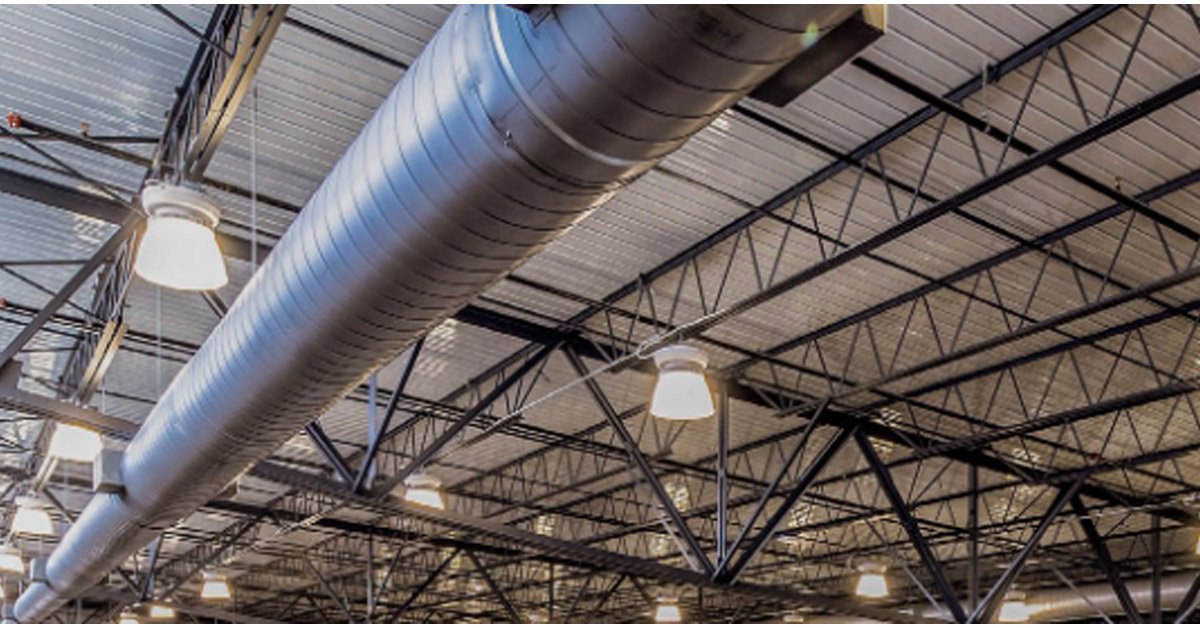Exposed Metal Roof Decking: What Contractors Need To Know
By the time metal decking gets to a jobsite it has been put into bundles, banded together by steel straps, and moved on and off trucks with forklifts. So it should come as no surprise that the metal decking panels will have some dents and/or scratches. This is especially true of the bottom sheets of the bundles, they take the most impact with forklifts.
These minor dents and scratches don’t actually compromise the metal deck, so they aren’t means for rejection. In fact on most jobs the metal decking is covered up by concrete or built up roofing. However, there are jobs where the metal decking is installed in a manner that leaves one or both sides exposed.
Western Metal Deck has been selling metal decking for over 30 years on all types of construction projects. Whenever a customer tells us that the decking is going to be exposed we go over a few different tips from how to handle the decking to possibly ordering extra sheets.
Whether you are bidding or have a job with exposed metal decking there are a few things to know. From the added costs to how to properly handle and store the metal decking, we will guide you through the in’s and out’s of how to prepare for a job with exposed metal decking.
In this article we go over:
- Types Of Jobs With Exposed Metal Decking
- Additional Costs Of Exposed Metal Decking
- Handling & Storage Exposed Metal Decking
Types Of Jobs With Exposed Metal Roof Decking
Exposed metal roof decking is commonly used in commercial applications. Some of the common applications include:
- Covered Canopies - On large loading docks exposed metal roof decking is installed on top of the structural steel framing. This creates a strong, low cost cover to provide shade and limited protection from the weather.
- Exposed Roof Screens - A roof screen is basically a fence around equipment located on the roof of commercial warehouses. The purpose of the roof screen is to hide the equipment and make the building look much nicer by blocking the view of the equipment.
- Smoke Screens - Most large warehouses have smoke screens on the underside of the roof to help funnel smoke from a fire to the vents, leading to the outside.
- Trash Areas - On commercial warehouses trash storage areas have steel roofs covered with exposed metal roof decking. The trash gates will also have steel frames that are covered by metal decking. On the West Coast this is the way that the vast majority of commercial trash storage areas are constructed.
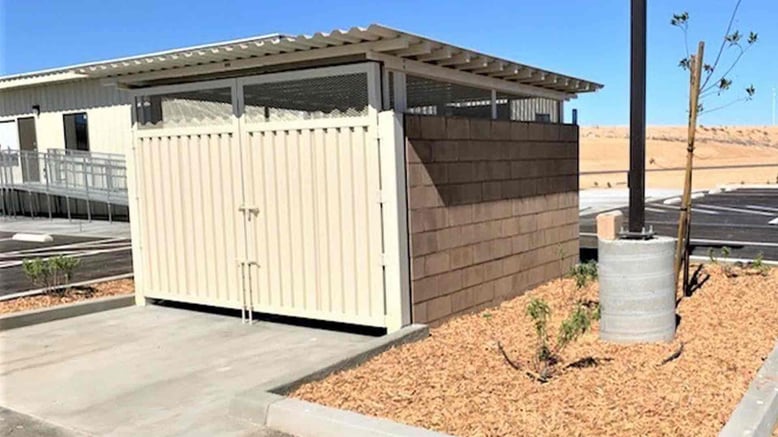 Photo Credit: Fusion Metal Works
Photo Credit: Fusion Metal Works
Exposed metal roof decking comes in two common types: HSB-36 and Deep Vercor.
If your project contains any of these types of applications the first and most important thing to do is to recognize that the material will be exposed to view. Proper care must be taken not to damage the roof decking panels. This starts with the factory manufacturing process and continues through all phases of trucking, loading, unloading, storage, hoisting, and installation.
Additional Costs Of Exposed Metal Roof Decking
When purchasing the metal decking material you should be sure to let your supplier know that the metal decking will be exposed and needs to look in new, undamaged condition. This requirement can increase the metal deck cost by about 10%.
The first thing that may come to your mind is why do you have to pay extra if you are buying new material?
There are three main reasons why new material may cost more if your job needs to be free of minor dings and dents.
- You may want to pay for protective cover sheets. Meaning you would purchase two extra sheets per bundle, an extra sheet for the top and an extra sheet for the bottom of the bundle. If a standard bundle has 20 sheets in it and you add two more sheets for top and bottom cover sheets then you have increased your amount of material by 10% and your cost will go up by 10%.
- Adding extra sticks of wood aka dunnage during the trucking process. The standard loading process is to put dunnage at six feet on center. Most dunnage is 3” X 3” or 4” X 4” and is 7 to 8 feet long. If you put double dunnage on the load the dunnage would be at 3’ on center. This obviously requires twice the dunnage expense. There are 40 to 50 pcs of regular dunnage on a standard 45,000 pound load. Double dunnage would result in having 80 to 100 pcs of dunnage which will cost twice as much. The average cost of 7’ to 8’ dunnage is about $3.00 per piece.
- Light truck load versus heavy truck load. Metal decking is put into bundles and stacked on top of each other onto a truck. The more weight that is loaded on a truck the more damage, in the form of minor denting, that will likely occur to the bottom bundles. A typical big rig truck can haul 45,000 pounds. However, 45,000 pounds of metal decking on a truck puts a lot of weight on the bottom bundles. Splitting up deliveries into lighter truck loads can help, but it does increase the shipping cost. The local average big rig price (within 30 miles) is approximately $700.00 per truck.
Handling & Storage Of Exposed Metal Roof Decking
Once the exposed metal decking has been shipped and arrives on the jobsite special care must be taken to keep the metal decking in new undamaged condition.
If the truck is unloaded with a forklift - care must be taken to not stab the metal decking with the end of the forks. This is a result of the forklift operators improper alignment. Stabbing the material by the forks of the forklift will make dents in the metal decking. Depending on the force applied by the forklift, these dents can penetrate numerous sheets.
Another problem that may occur on a jobsite after the metal decking is delivered is water damage, usually as a result of rain. If the metal deck bundles are not spread and installed on the jobsite and they get rained on, they will fill up with water.
If bundles are left sitting for a period of time full of water. they will get covered with what is known as white rust. This will usually happen to every sheet in the bundle because the water will cover every sheet in the bundle. Once white rust begins it will turn to red rust after a while.
The best way to combat this problem on a job is to store the bundles with some slope on them to help the water to drain out. The metal decking bundles should also be tarped if they are going to be stored on a jobsite which will help keep the rain out.
Once the metal decking bundles are spread out and installed on a job there are usually no additional damage problems from rain. After the rain stops the water on top of the metal decking will dry up. However, any old damage that was done due to improper storage will not go away. The problem may cost a large amount of money to fix depending on the job size.
Where To Purchase Exposed Metal Roof Decking
Whether or not your metal decking is exposed, who to purchase it from remains the same. You should be able to purchase exposed metal decking from your local metal decking supplier. Be sure to let them know ahead of time that the metal decking will be exposed and therefore free of dings, dents and scratches. They should then let you know whether there will be any additional charges and whether or not they recommend purchasing additional sheets.
At Western Metal Deck we stock metal decking in different profiles, gauges, and finishes. We can supply you with metal decking the same day. We offer services such as cutting the metal decking to your specified lengths and can quote you for shipping it to your shop or jobsite.
To learn more about metal roof decking check out: What Is Metal Roof Decking? Why Is It Used On Buildings?

